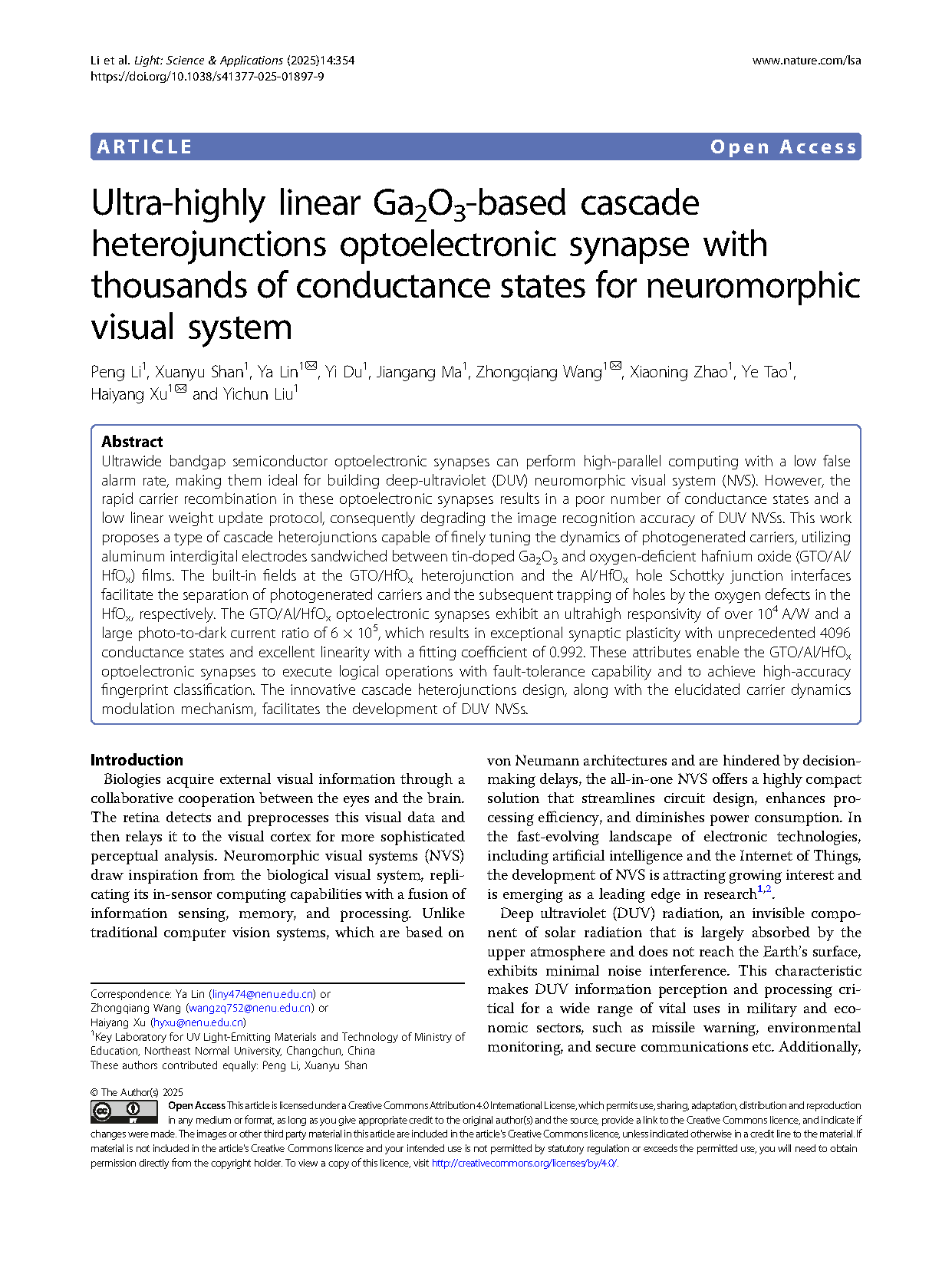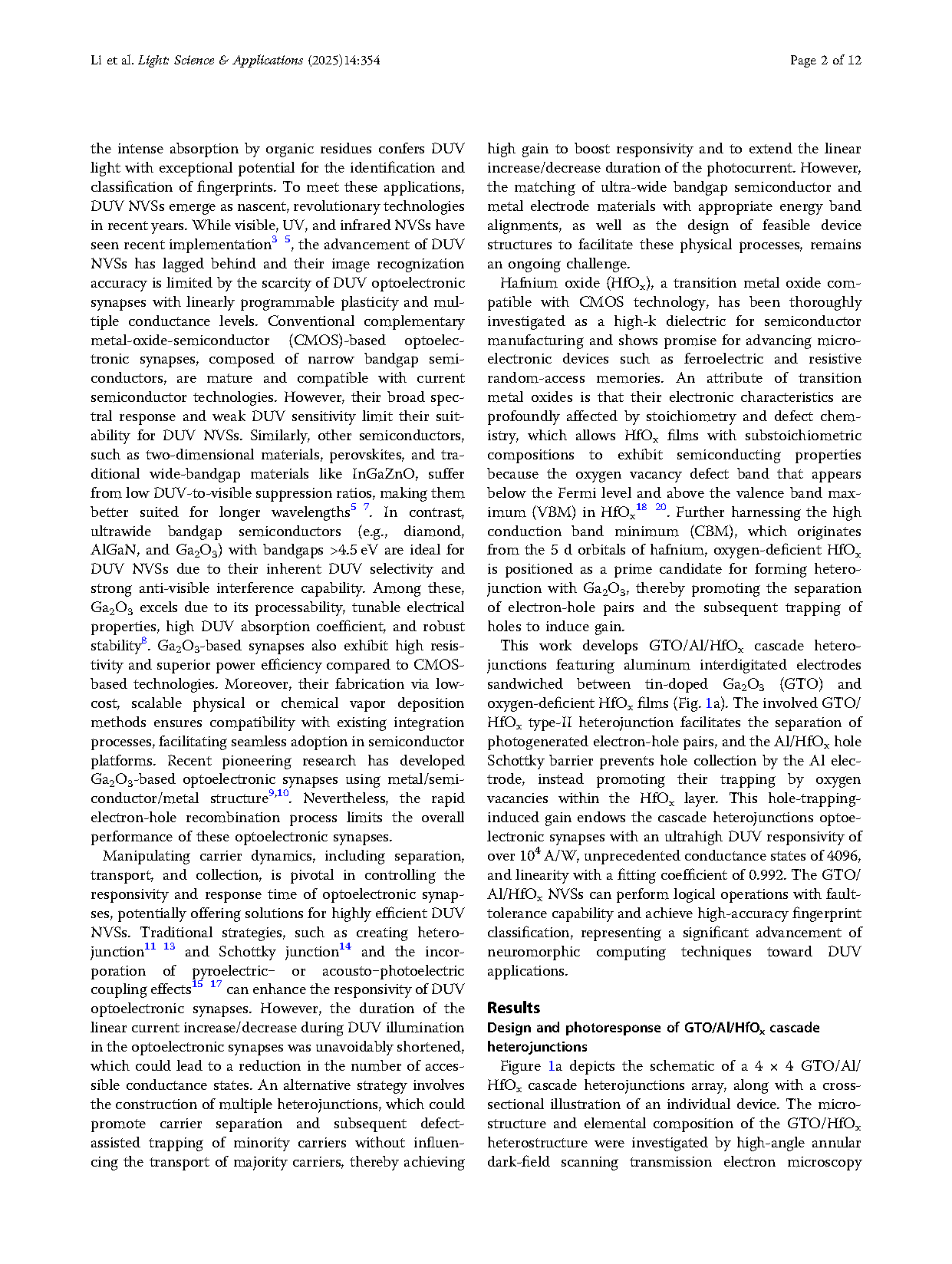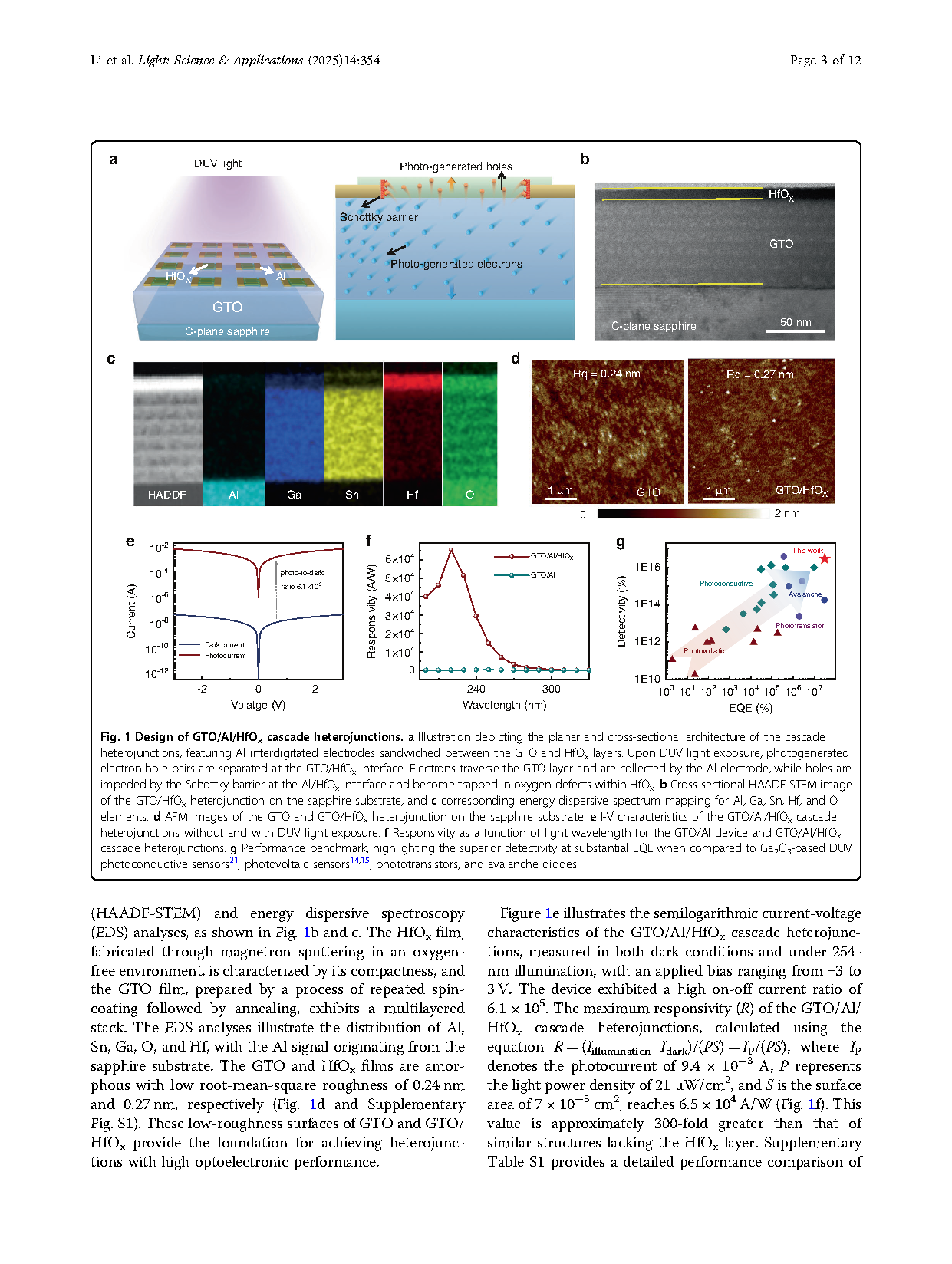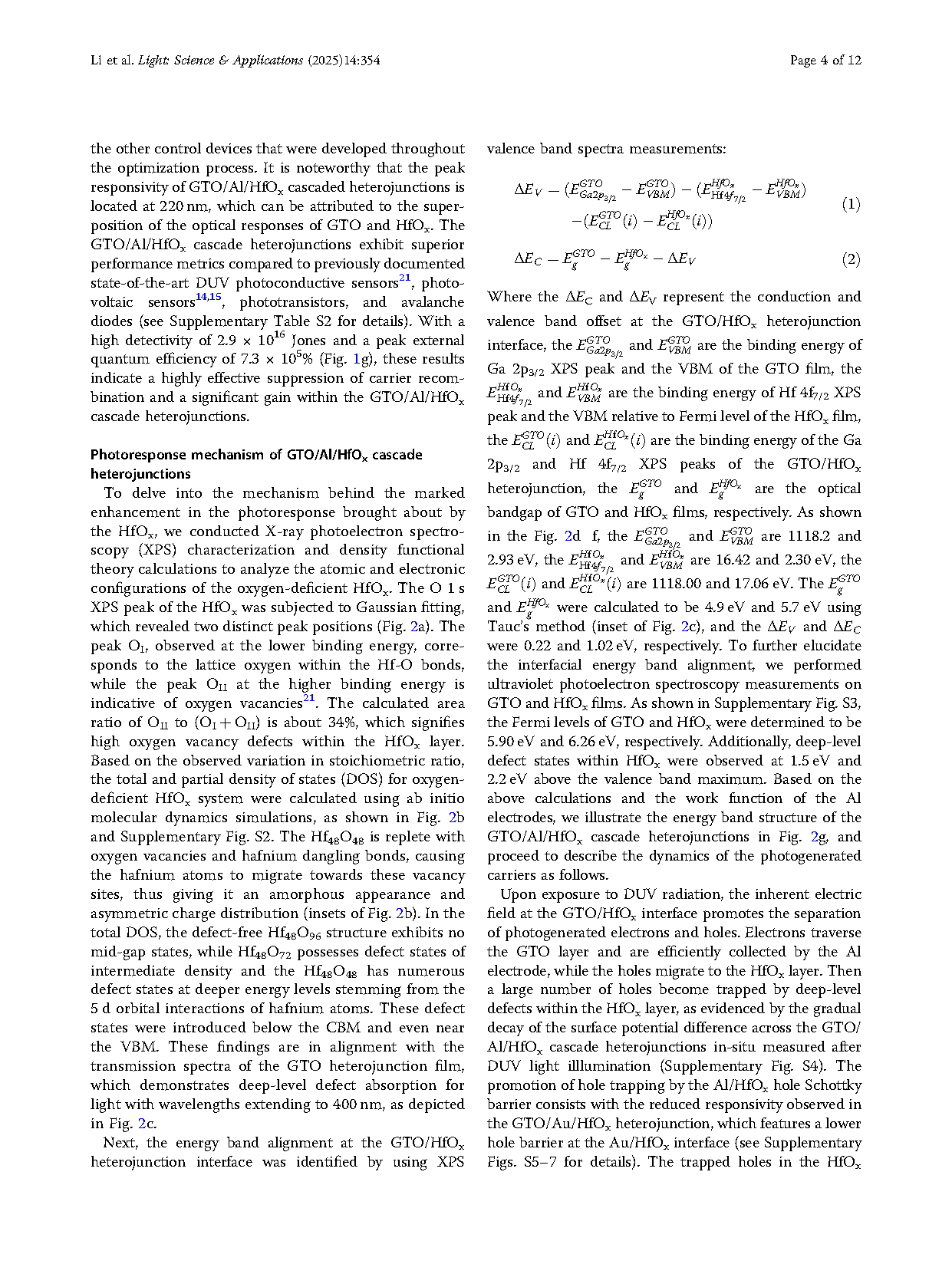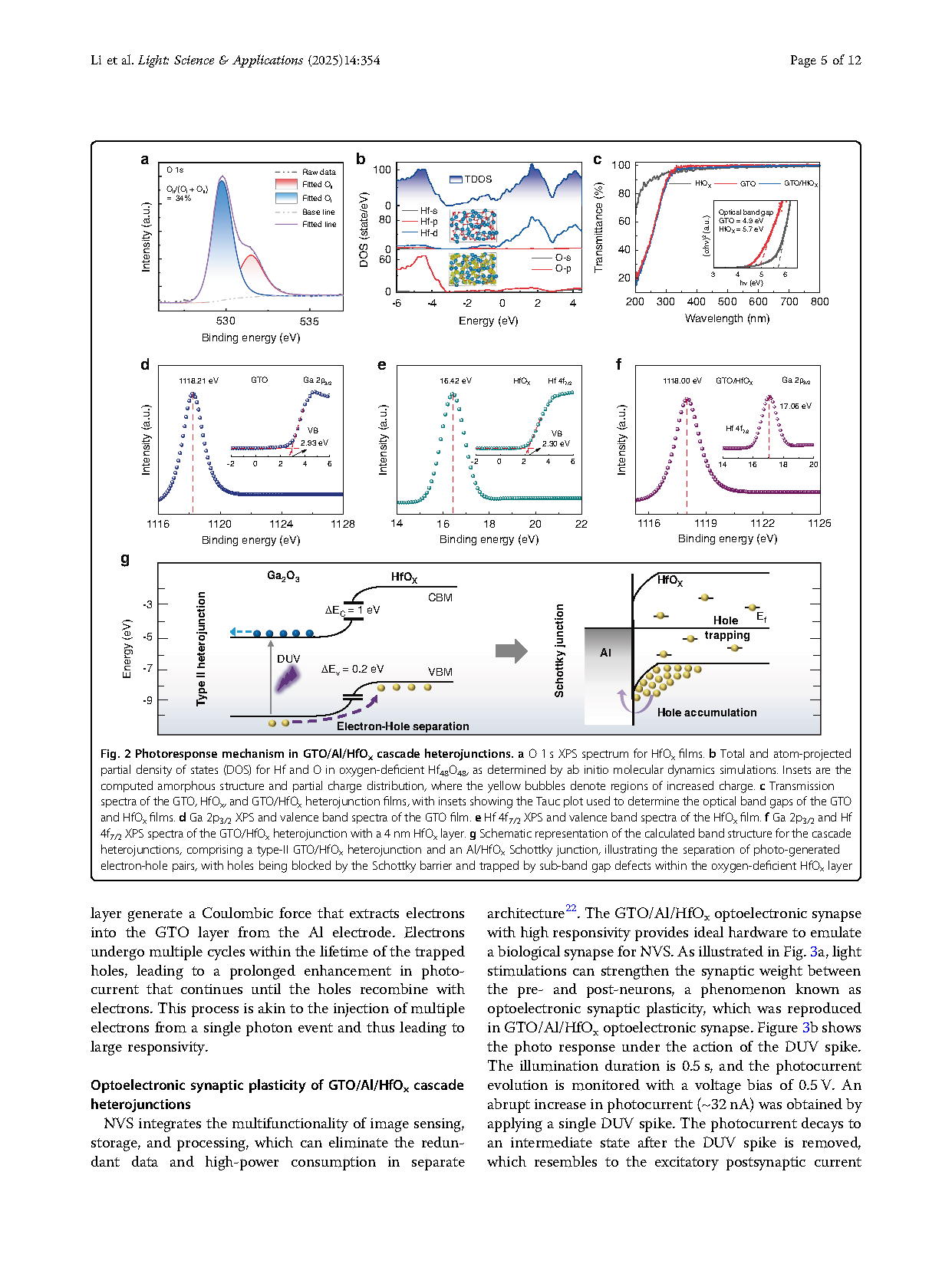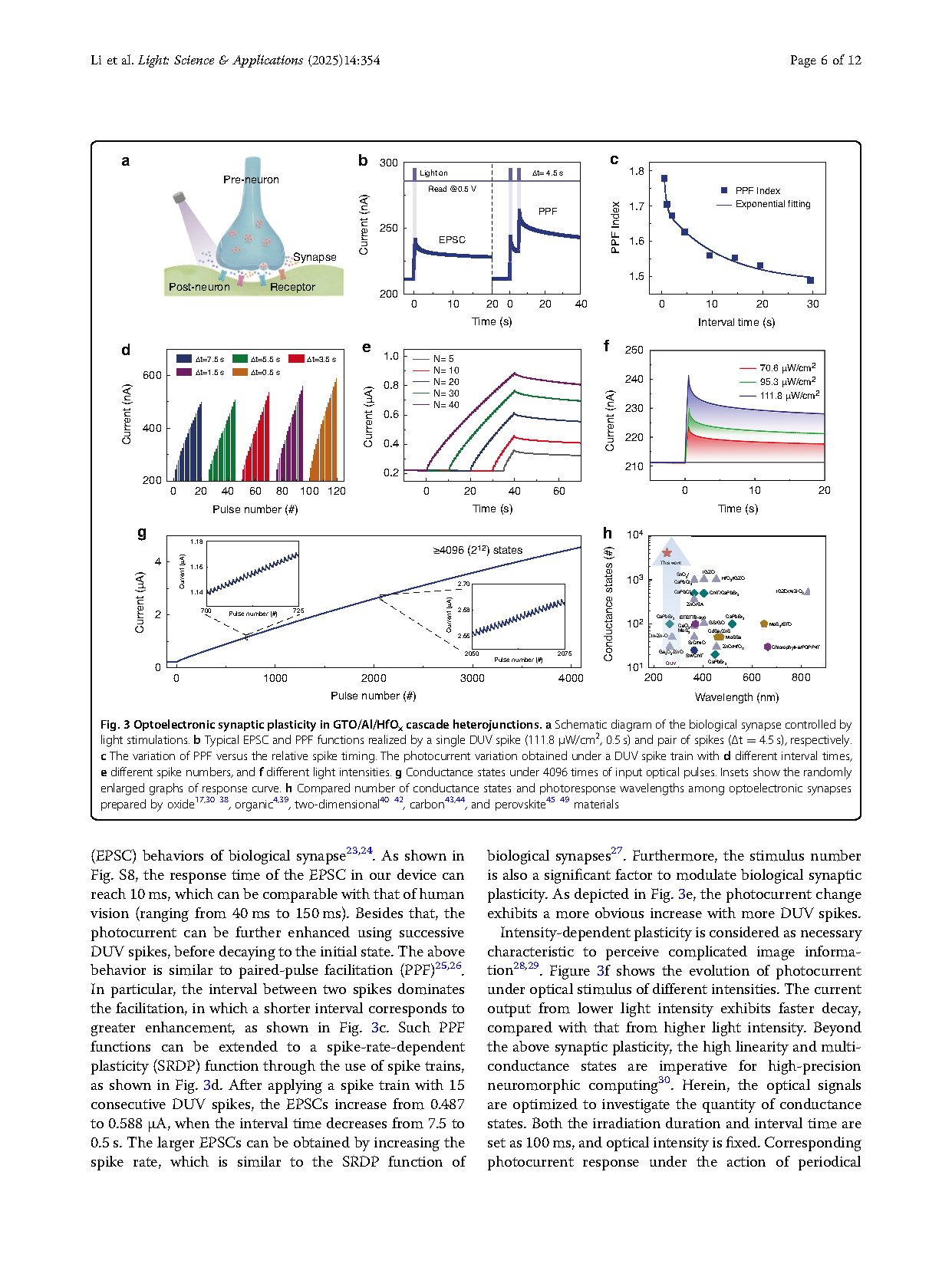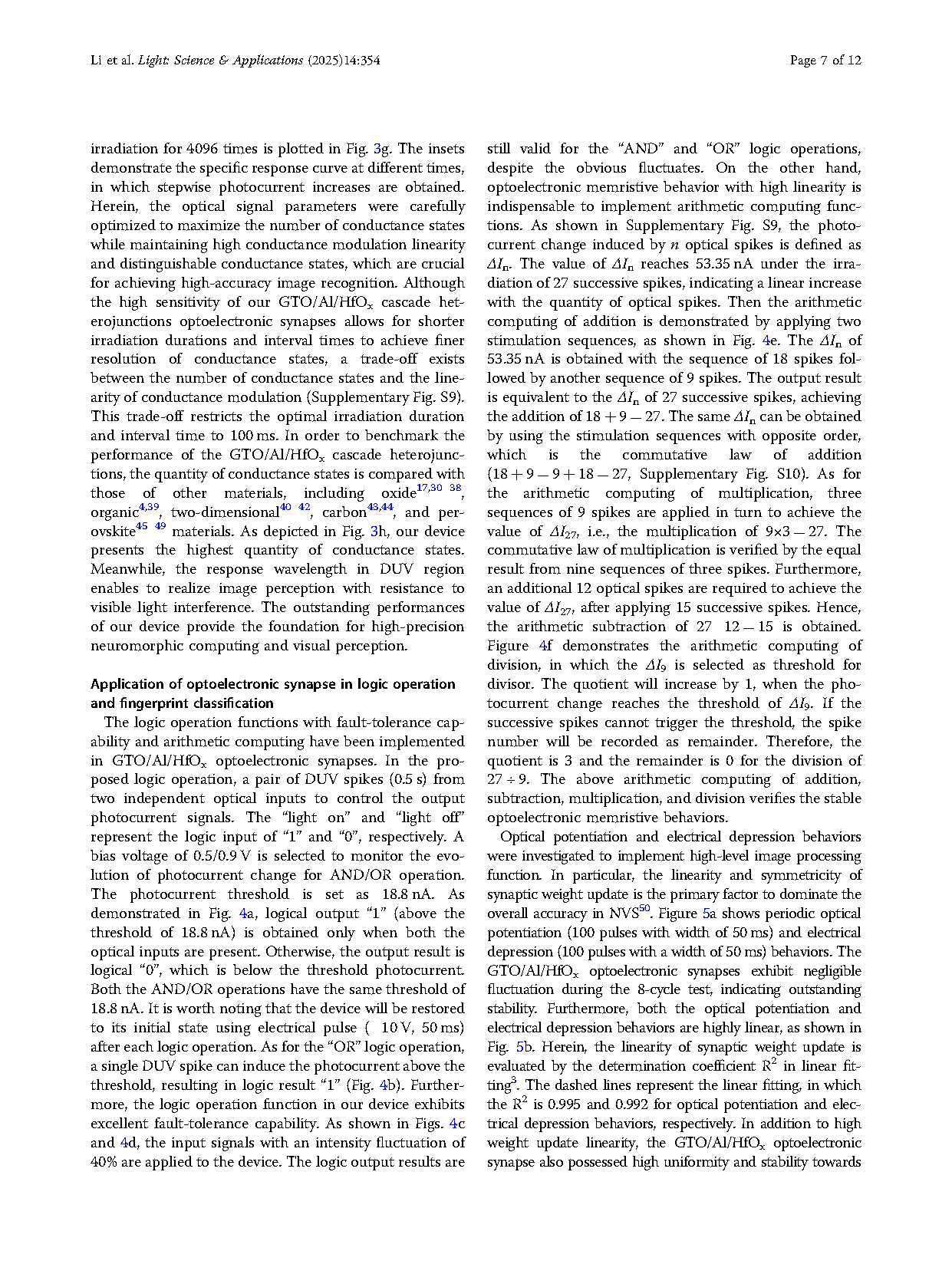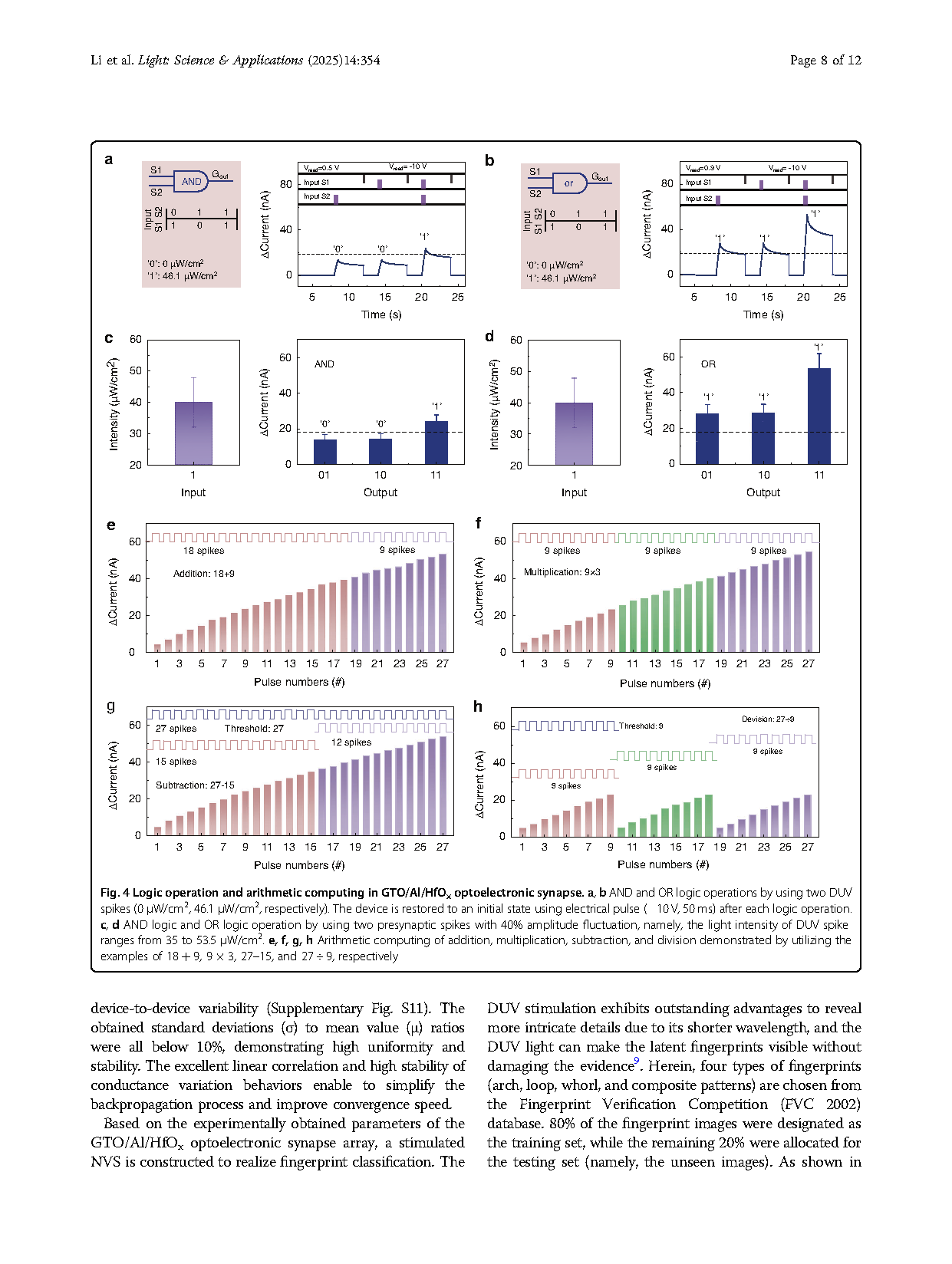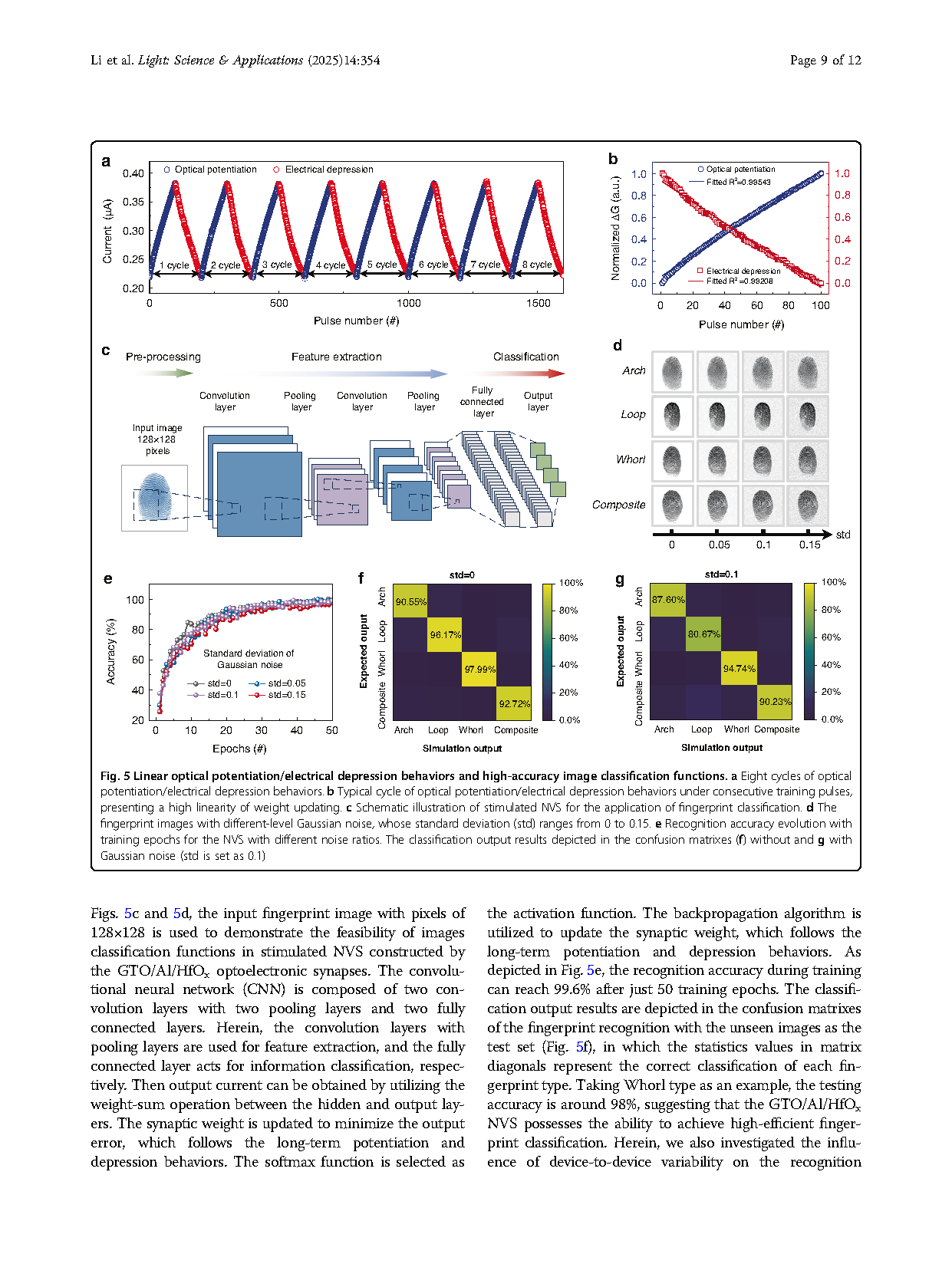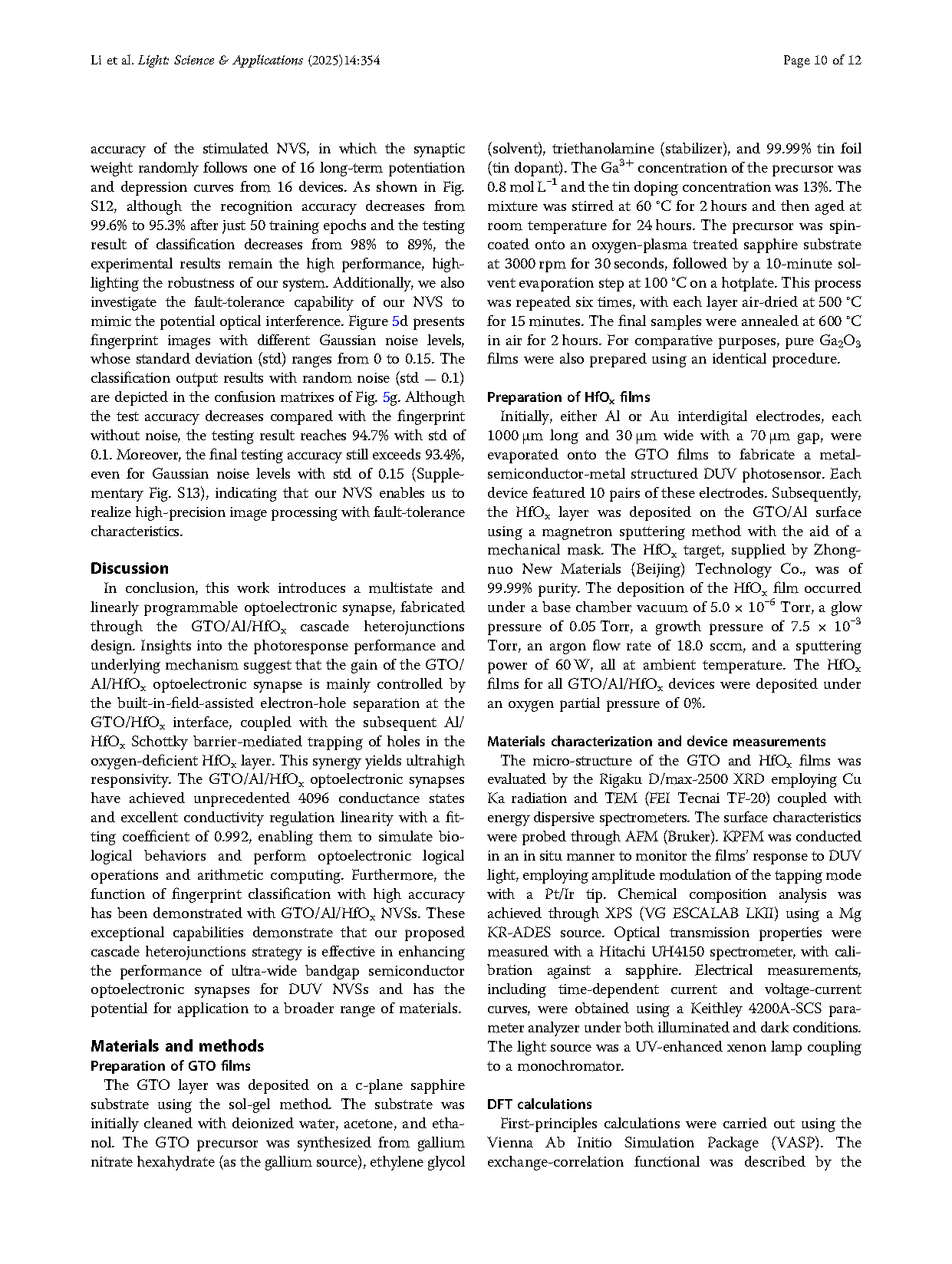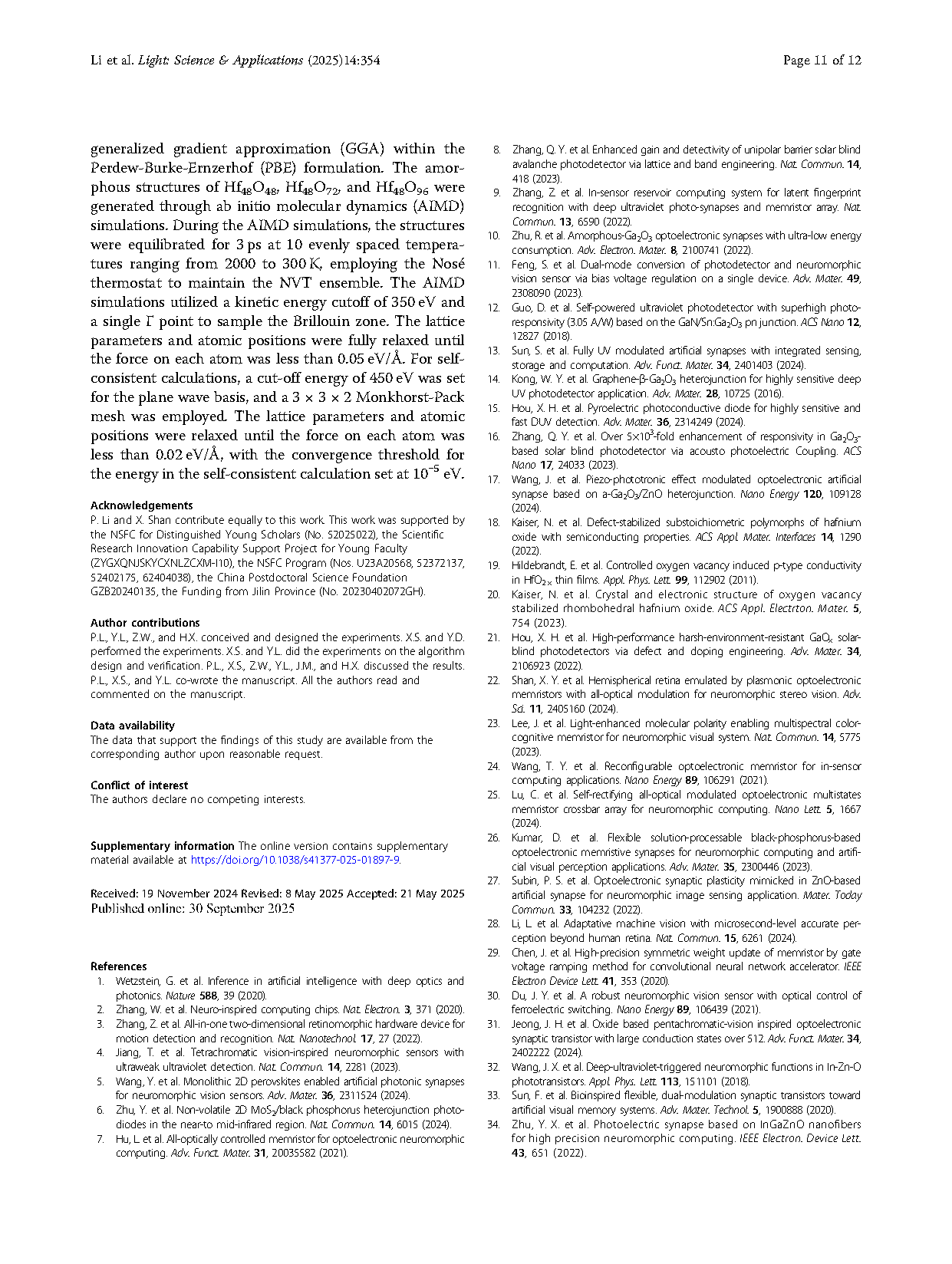
【Member Papers】Ultra-highly linear Ga₂O₃-based cascade heterojunctions optoelectronic synapse with thousands of conductance states for neuromorphic visual system
日期:2025-10-22阅读:66
Researchers from the Northeast Normal University have published a dissertation titled "Ultra-highly linear Ga2O3-based cascade heterojunctions optoelectronic synapse with thousands of conductance states for neuromorphic visual system" in light: science & applications.
Project Support
Li and X. Shan contribute equally to this work. This work was supported by the NSFC for Distinguished Young Scholars (No. 52025022), the Scientific Research Innovation Capability Support Project for Young Faculty (ZYGXQNJSKYCXNLZCXM-I10), the NSFC Program (Nos. U23A20568, 52372137, 52402175, 62404038), the China Postdoctoral Science Foundation GZB20240135, the Funding from Jilin Province (No. 20230402072GH).
Background
Biologies acquire external visual information through a collaborative cooperation between the eyes and the brain. The retina detects and preprocesses this visual data and then relays it to the visual cortex for more sophisticated perceptual analysis. Neuromorphic visual systems (NVS) draw inspiration from the biological visual system, replicating its in-sensor computing capabilities with a fusion of information sensing, memory, and processing. Unlike traditional computer vision systems, which are based on von Neumann architectures and are hindered by decision-making delays, the all-in-one NVS offers a highly compact solution that streamlines circuit design, enhances processing efficiency, and diminishes power consumption. In the fast-evolving landscape of electronic technologies, including artificial intelligence and the Internet of Things, the development of NVS is attracting growing interest and is emerging as a leading edge in research.
Abstract
Ultrawide bandgap semiconductor optoelectronic synapses can perform high-parallel computing with a low false alarm rate, making them ideal for building deep-ultraviolet (DUV) neuromorphic visual system (NVS). However, the rapid carrier recombination in these optoelectronic synapses results in a poor number of conductance states and a low linear weight update protocol, consequently degrading the image recognition accuracy of DUV NVSs. This work proposes a type of cascade heterojunctions capable of finely tuning the dynamics of photogenerated carriers, utilizing aluminum interdigital electrodes sandwiched between tin-doped Ga2O3 and oxygen-deficient hafnium oxide (GTO/Al/HfOx) films. The built-in fields at the GTO/HfOx heterojunction and the Al/HfOx hole Schottky junction interfaces facilitate the separation of photogenerated carriers and the subsequent trapping of holes by the oxygen defects in the HfOx, respectively. The GTO/Al/HfOx optoelectronic synapses exhibit an ultrahigh responsivity of over 104 A/W and a large photo-to-dark current ratio of 6 × 105, which results in exceptional synaptic plasticity with unprecedented 4096 conductance states and excellent linearity with a fitting coefficient of 0.992. These attributes enable the GTO/Al/HfOx optoelectronic synapses to execute logical operations with fault-tolerance capability and to achieve high-accuracy fingerprint classification. The innovative cascade heterojunctions design, along with the elucidated carrier dynamics modulation mechanism, facilitates the development of DUV NVSs.
Conclusion
In conclusion, this work introduces a multistate and linearly programmable optoelectronic synapse, fabricated through the GTO/Al/HfOx cascade heterojunctions design. Insights into the photoresponse performance and underlying mechanism suggest that the gain of the GTO/Al/HfOx optoelectronic synapse is mainly controlled by the built-in-field-assisted electron-hole separation at the GTO/HfOx interface, coupled with the subsequent Al/HfOx Schottky barrier-mediated trapping of holes in the oxygen-deficient HfOx layer. This synergy yields ultrahigh responsivity. The GTO/Al/HfOx optoelectronic synapses have achieved unprecedented 4096 conductance states and excellent conductivity regulation linearity with a fitting coefficient of 0.992, enabling them to simulate biological behaviors and perform optoelectronic logical operations and arithmetic computing. Furthermore, the function of fingerprint classification with high accuracy has been demonstrated with GTO/Al/HfOx NVSs. These exceptional capabilities demonstrate that our proposed cascade heterojunctions strategy is effective in enhancing the performance of ultra-wide bandgap semiconductor optoelectronic synapses for DUV NVSs and has the potential for application to a broader range of materials.
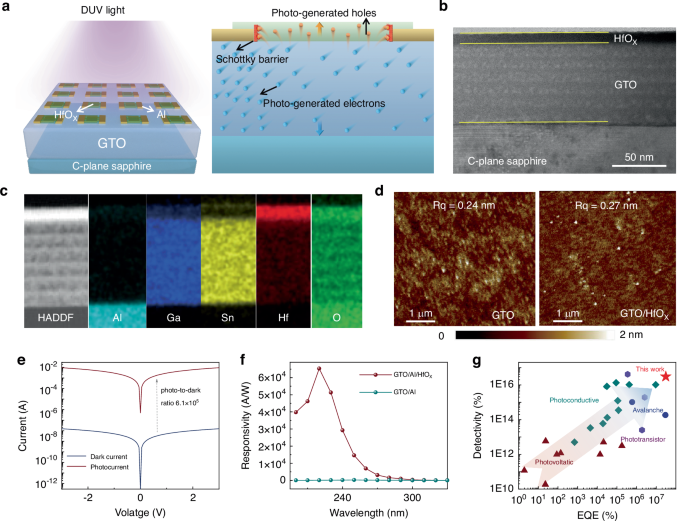
Fig. 1: Design of GTO/Al/HfOx cascade heterojunctions.
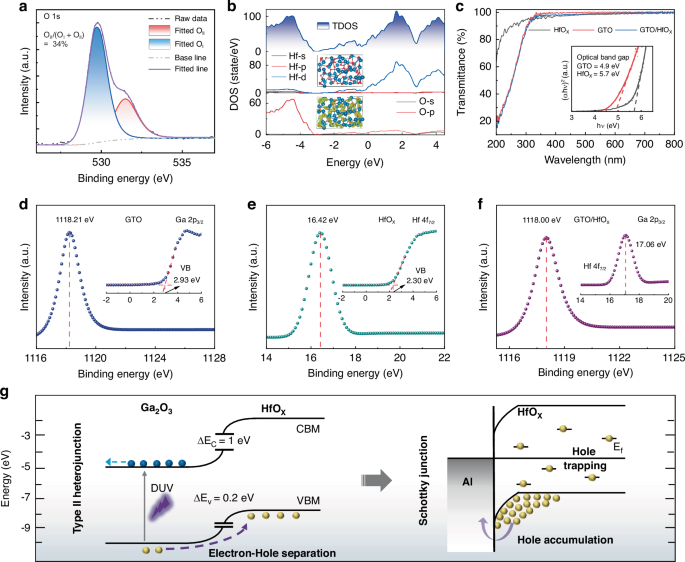
Fig. 2: Photoresponse mechanism in GTO/Al/HfOx cascade heterojunctions.
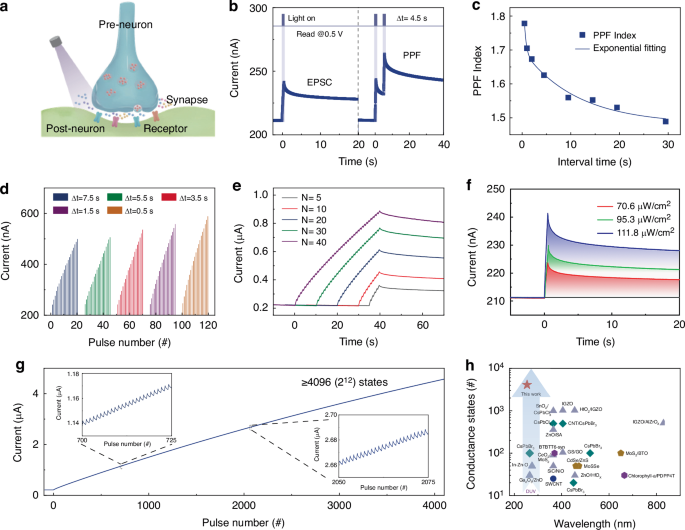
Fig. 3: Optoelectronic synaptic plasticity in GTO/Al/HfOx cascade heterojunctions.
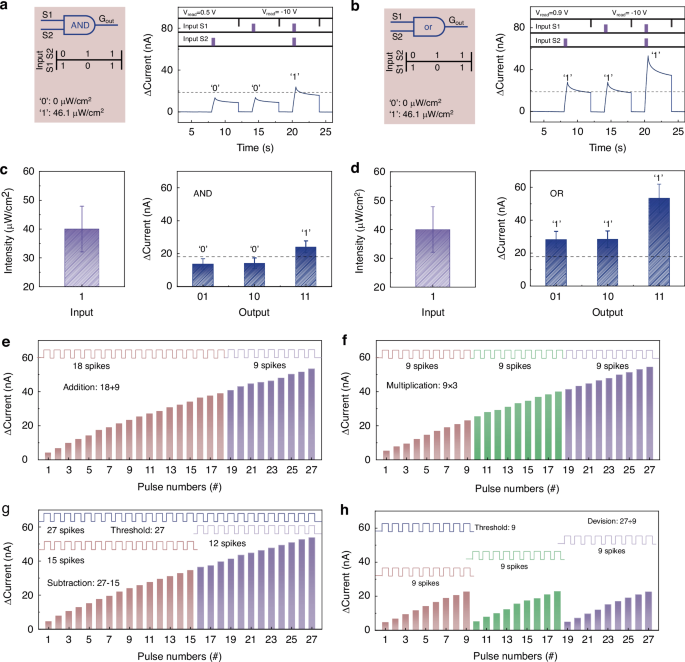
Fig. 4: Logic operation and arithmetic computing in GTO/Al/HfOx optoelectronic synapse.
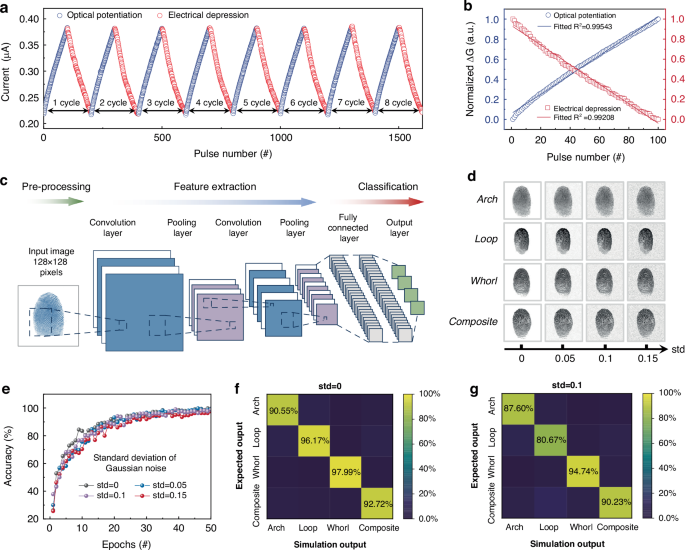
Fig. 5: Linear optical potentiation/electrical depression behaviors and high-accuracy image classification functions.
DOI:
doi.org/10.1038/s41377-025-01897-9
